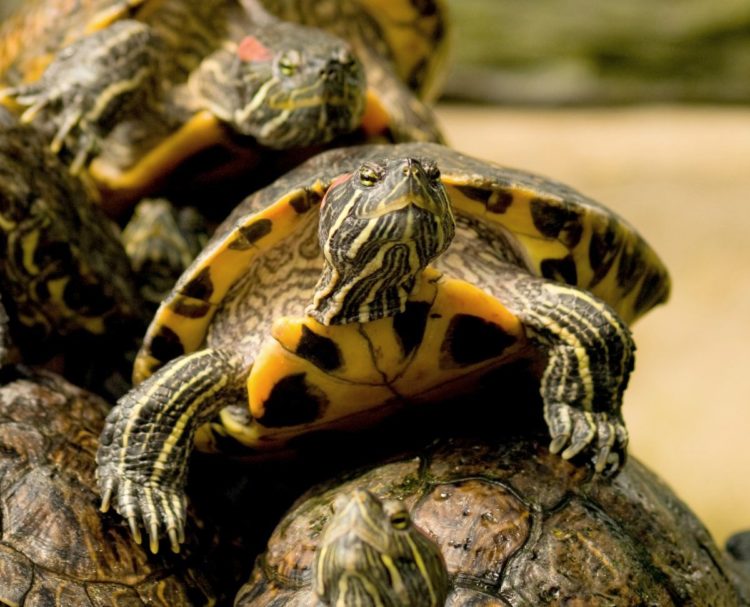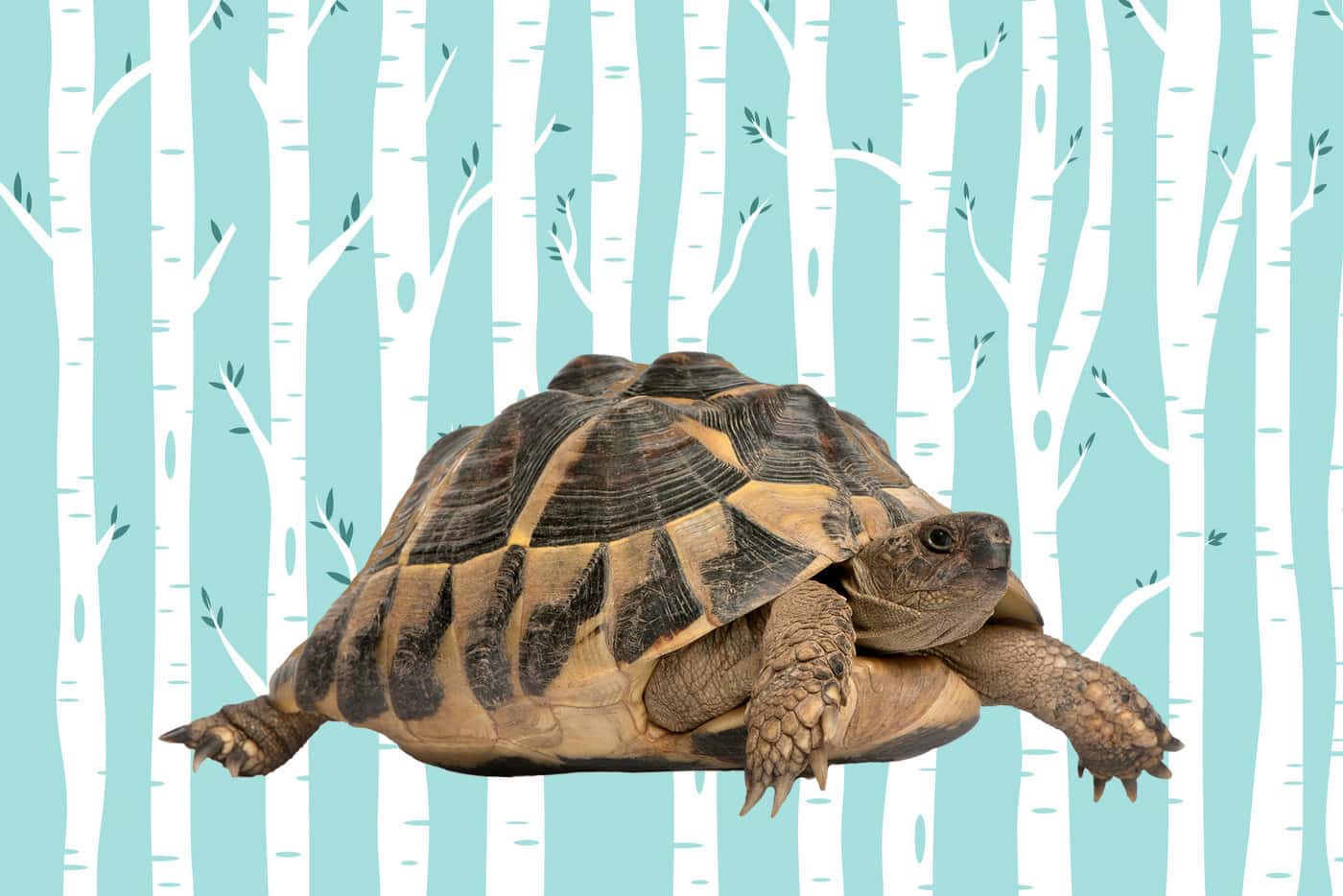What’s the difference between a turtle & a tortoise?
Is there actually a difference between a turtle and a tortoise, or are the terms just used interchangeably?
This one confuses a lot of people — they’re both scaly things with shells, right? Well, you’re not really as confused as you might think, because they can all be called turtles. But while a tortoise is a turtle, not all turtles are tortoises.
Shell shocked
Turtlekind has been around for about 200 million years, which means they’re older even than snakes or crocodiles.
Turtles and tortoises — along with their cousins, terrapins — are all reptiles that belong to the order Testudines.
In the US, at least, the different names really refer to where and how the animals live, rather than any fundamental differences between the various species.
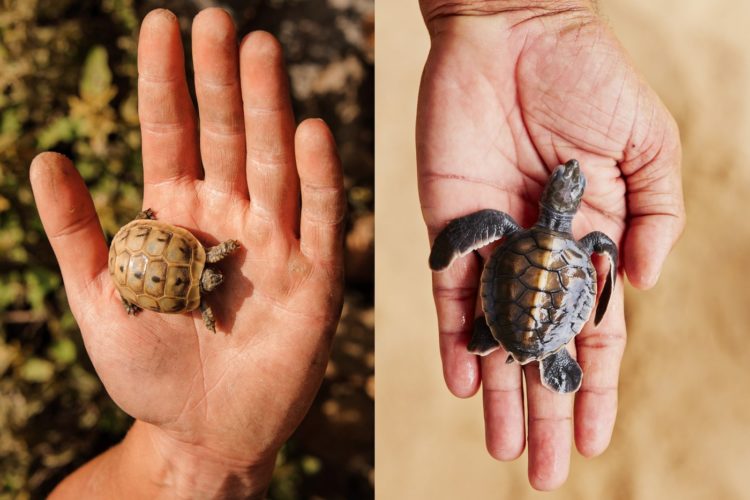
All turtles are cold-blooded animals that lay eggs and have shells. Those shells are unique to turtles, and aren’t anything like seashells or snail shells, but are made up of about 50 bones.
“The turtle shell is a complex structure whose initial transformations started over 260 million years ago in the Permian period,” says Tyler Lyson of Yale University and the Smithsonian. “Like other complex structures, the shell evolved over millions of years and was gradually modified into its present-day shape.”
The turtle
A turtle spends the majority of its lifetime in the water, generally has webbed feet, and hardly leaves the ocean except when females come ashore to lay eggs.
Freshwater turtles that live in ponds and lakes are similar, though they tend to hang out on logs, rocks, or the shore to get some sun.
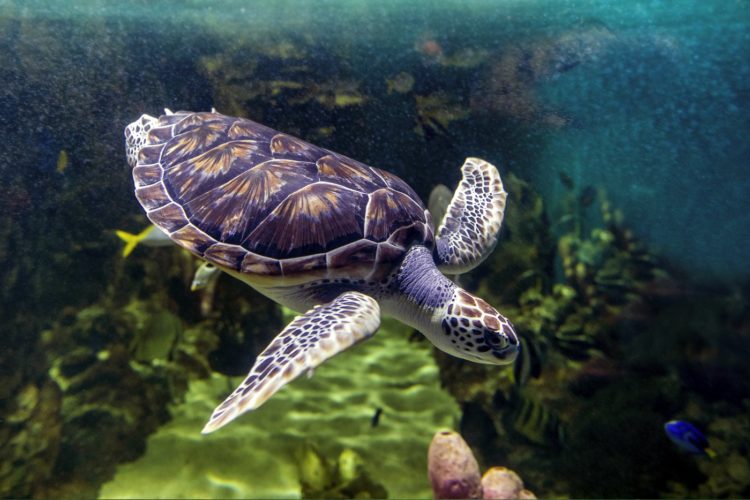
The tortoise
Tortoises are land animals. They don’t have webbed feet, but instead sport stumpy round ones more suited to walking on land.
They’re herbivorous, so their diet tends towards shrubs, grasses and plants, and often are found in hot, dry climates like the desert. Tortoises can easily live to be more than a hundred years old, and that number could actually be closer to 150 or 200 years.
Particularly given their lifespan, they can also grow very large. For example, a male Galapagos tortoise (Geochelone nigra) that was raised in captivity in Florida eventually weighed 882 pounds.
A simple way to remember that the tortoise lives on land: think about the old story, The Tortoise and the Hare. Slow and steady won the race — and they weren’t swimming.
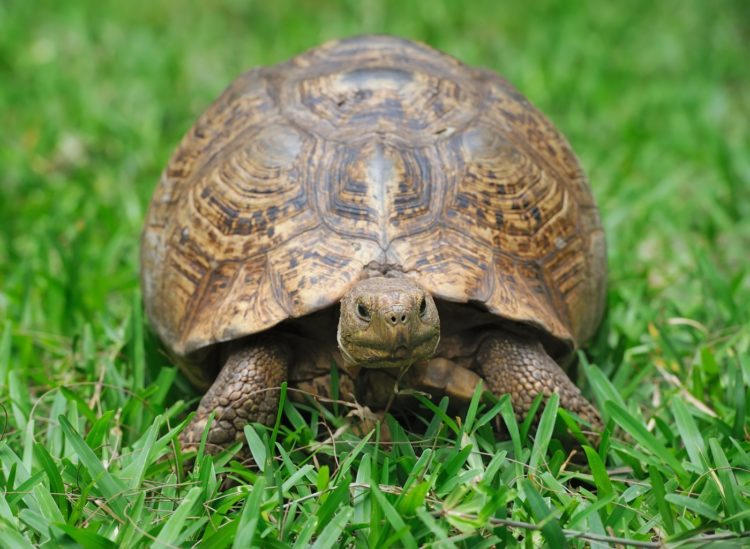
The Terrapin
You can think of a terrapin as kind of a combination of both turtle and tortoise — it splits its time between the land and the water, living near a lake, pond or river. They are particularly noted for living in swamps or other areas with brackish (slightly salty) water.
While the red-eared slider (aka the red-eared terrapin), is a semiaquatic turtle that has become a very popular pet, the name terrapin usually refers to the diamondback terrapin (Malaclemys terrapin), shown below, which occasionally finds its way onto a dinner plate.
